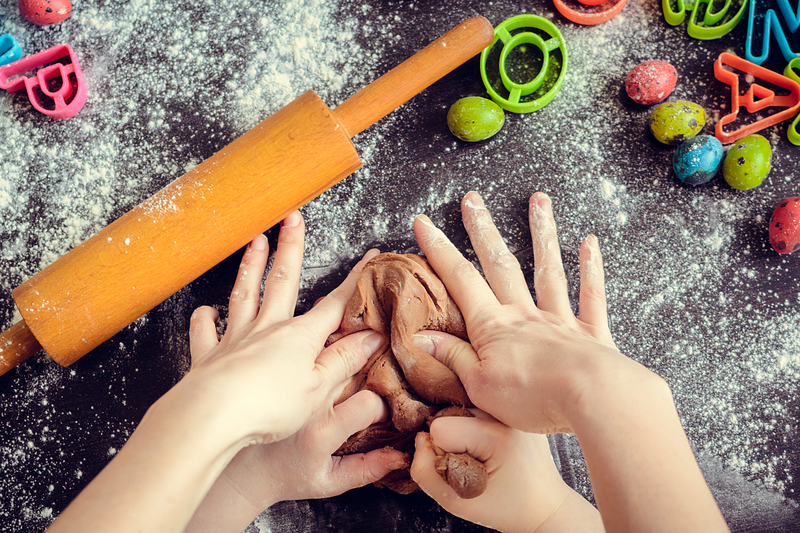Easily keep your bathroom mold-free with these clever techniques
Posted on 22/08/2025
Easily Keep Your Bathroom Mold-Free with These Clever Techniques
Bathroom mold is a common headache for homeowners and renters alike, emerging in warm, damp spaces where moisture and humidity converge. Fortunately, you don't have to be a cleaning expert to maintain a fresh, clean, and mold-free bathroom. With these clever, easy-to-follow techniques, you can banish mold and prevent it from returning, all while protecting your family's health and increasing the longevity of your bathroom surfaces.
Understanding Bathroom Mold
Mold in the bathroom can cause more than unsightly stains; it poses health risks and can permanently damage surfaces. Mold grows in moist environments where air circulation is poor, feeding off organic materials such as wood, grout, and even soap scum. Bathroom mold prevention is vital for sustaining a pleasant and healthy living space.
Why Does Mold Thrive in Bathrooms?
- Humidity: Steam from hot showers and baths creates a humid environment ideal for mold growth.
- Poor Ventilation: Inadequate airflow lets moisture linger, giving mold more time to colonize walls, ceilings, and grout.
- Organic Materials: Items like wood, wallpaper glue, and even dust provide food for mold spores.

Clever Techniques to Keep Your Bathroom Mold-Free
If you're determined to eliminate bathroom mold and keep it from coming back, here's a comprehensive list of smart methods to ensure your washroom stays spotless and safe.
Enhance Ventilation for a Fresher Bathroom
- Install a Quality Exhaust Fan: An efficient exhaust fan is your best defense against humidity. Make sure to turn it on before your shower and leave it running for at least 20 minutes afterward to fully expel moist air.
- Open Windows and Doors: If possible, open a window while showering or bathing to help moisture escape. Even keeping the bathroom door ajar for several minutes post-shower can rapidly decrease humidity levels.
- Utilize a Dehumidifier: Portable dehumidifiers are great for bathrooms without windows or fans. Run the dehumidifier daily, especially if you notice condensation regularly on surfaces.
Keep Surfaces Dry
- Wipe Down Tiles and Fixtures: After each use, use a squeegee or microfiber cloth to remove water from walls, glass, and countertops. This quick action prevents lingering moisture from seeping into grout or behind tiles.
- Fix Leaks Immediately: Check under sinks and around toilets for leaks or drips. Even tiny leaks can raise humidity and provide the perfect breeding ground for mold.
- Hang Towels and Rugs Properly: Always hang wet towels and bathmats so they dry quickly. Don't bunch them up or leave them in a pile; mold can start growing within 24-48 hours!
Optimize Shower and Bath Design
- Seal Grout and Tiles Regularly: Mold loves grout, so applying a penetrating sealer at least once a year will stop water and mold spores from lodging in tiny cracks.
- Choose Mold-Resistant Materials: When renovating, choose mold-resistant paints, shower curtains, and drywall. These materials are specifically designed to deter mold colonization.
- Use a Shower Liner: A plastic or vinyl liner inside your shower curtain prevents excess moisture from escaping and accumulating on floors or behind the curtain.
Routine Cleaning and Maintenance to Prevent Mold
Regular cleaning is essential to prevent mold in the bathroom. Even with the best techniques and materials, mold spores are virtually everywhere and will take hold if given the chance.
Weekly Cleaning Actions
- Disinfect Surfaces: Use a bathroom cleaner containing bleach or vinegar to wipe down tiles, countertops, faucets, and tubs. Both bleach and vinegar are naturally hostile to mold spores.
- Scrub Grout Lines: Pay extra attention to the spaces between tiles. A toothbrush or grout brush with a baking soda paste can help remove stubborn stains without damaging your grout.
- Empty the Trash Regularly: Bathroom trash often contains damp items that can foster mold. Empty it at least once a week, and use a bin with a lid to limit spore spread.
Monthly and Seasonal Mold Prevention
- Wash Shower Curtains and Liners: Toss fabric curtains and plastic liners into the washing machine monthly to eliminate hidden mold and soap scum buildup.
- Check Fans and Vents: Dust and lint in exhaust fans can obstruct airflow and reduce efficiency. Clean fan covers and vacuum vents to ensure optimal performance.
- Inspect for Hidden Leaks: Examine under sinks, around toilet bases, and behind toilets for water stains or odors. Early leak detection is crucial for keeping mold out of unseen spaces.
Special Cleaning Solutions for Mold Removal
- Vinegar Spray: Place distilled white vinegar in a spray bottle, apply liberally to affected areas, let it sit for one hour, then scrub and rinse clean. Vinegar is safe, effective, and leaves no toxic residue.
- Baking Soda Paste: Make a paste with water and baking soda to tackle stubborn stains on grout or caulk. This gentle abrasive removes mold without scratching surfaces.
- Hydrogen Peroxide Solution: Use 3% hydrogen peroxide for deeper mold removal. Spray, let stand for 10 minutes, then scrub and rinse.
*Never mix bleach and vinegar or peroxide, as dangerous fumes can result. Always ventilate the bathroom when cleaning with chemicals.
Advanced Techniques to Keep Your Bathroom Mold-Free
Upgrade to Mold-Resistant Fixtures
- Mold-Resistant Paints: Use bathroom-specific paints that contain antimicrobial agents.
- Waterproof Caulking: Re-caulk tubs and sinks with mold-resistant silicone. Replace at the first sign of blackening or cracking.
- Non-Porous Tiles: Choose ceramic or porcelain tiles over natural stone for showers and floors. Non-porous surfaces don't allow water or spores to seep in.
Control and Monitor Humidity Levels
- Use a Hygrometer: These inexpensive devices measure humidity. Keep the bathroom's humidity below 50% to stop mold growth.
- Install Automatic Humidity Sensors: Newer fan models can sense humidity and automatically turn on, making it virtually effortless to control moisture.
Address Structural and Plumbing Concerns
- Proper Tile Sloping: Ensure that tile floors slope toward drains to keep water from pooling.
- Insulate Pipes: Insulated pipes reduce condensation and the risk of hidden water leaks.
- Waterproof Wallpaper and Panels: If you love the look of wallpaper, choose special bathroom-rated, waterproof sheets, or wall panels that resist moisture absorption.
Health Implications of Mold in Bathrooms
Bathroom mold is more than unsightly--it can aggravate asthma, allergies, and respiratory issues. Here's why you should maintain a mold-free bathroom for your family's health:
- Allergic Reactions: Mold spores are a common allergen, causing runny nose, sneezing, and even skin rashes.
- Aggravated Asthma: Mold exposure can worsen symptoms in people with asthma or existing respiratory problems.
- Mycotoxin Concerns: Some bathroom molds produce toxins that can lead to more severe health effects with frequent exposure.
Prevention is the best medicine. By keeping your bathroom mold-resistant, you protect both your investment and your well-being.
Quick Tips for an Effortless Mold-Free Bathroom
- Leave the shower curtain or door open after use to promote drying.
- Replace cleaning sponges and brushes frequently--they can harbor hidden mold.
- Declutter your bathroom shelves to allow for easy cleaning and better airflow.
- Use a daily shower spray made of vinegar and water to keep surfaces cleaner between deep cleans.
- Install moisture-absorbing gels or packs in cabinets or closets to reduce hidden humidity.

FAQs on Keeping Bathrooms Mold-Free
How often should I clean my bathroom to prevent mold?
Weekly cleaning is the minimum to keep your bathroom free from mold. High-moisture zones, such as showers and tile surfaces, may require a quick wipe-down after every use to fully prevent mold growth.
Is bleach the best solution for mold removal?
Bleach kills surface mold, but vinegar penetrates porous surfaces more effectively. For best results, use vinegar for tiles and grout, and a diluted bleach solution only on non-porous, colorfast surfaces.
Can mold return after cleaning?
Yes--unless you remove the conditions that allow it to thrive. Always address moisture control, ventilation, and cleaning frequency to stop a mold comeback.
What if I find black mold?
Black mold (Stachybotrys chartarum) can be hazardous. For small patches, use the techniques above; for larger infestations or persistent black spots, consider professional remediation.
Final Thoughts: Keep Your Bathroom Mold-Free--Effortlessly
Maintaining a mold-free bathroom isn't a once-a-year chore--it's about committing to easy daily and weekly habits that safeguard your health and investment. By increasing ventilation, keeping surfaces dry, regularly cleaning, and using mold-resistant materials, you'll find that keeping mold at bay is simple and satisfying. Preventing bathroom mold not only ensures a sparkling clean environment but also protects individuals with allergies or respiratory sensitivities.
Embrace these clever techniques and transform your bathroom into a fresh, safe, and inviting sanctuary--free from the worry and hassle of mold.
- Improve airflow and decrease humidity for a mold-resistant space.
- Clean regularly using natural, effective solutions.
- Stay attentive to leaks and structural vulnerabilities.
Start using these smart techniques today-and easily keep your bathroom mold-free for years to come!



